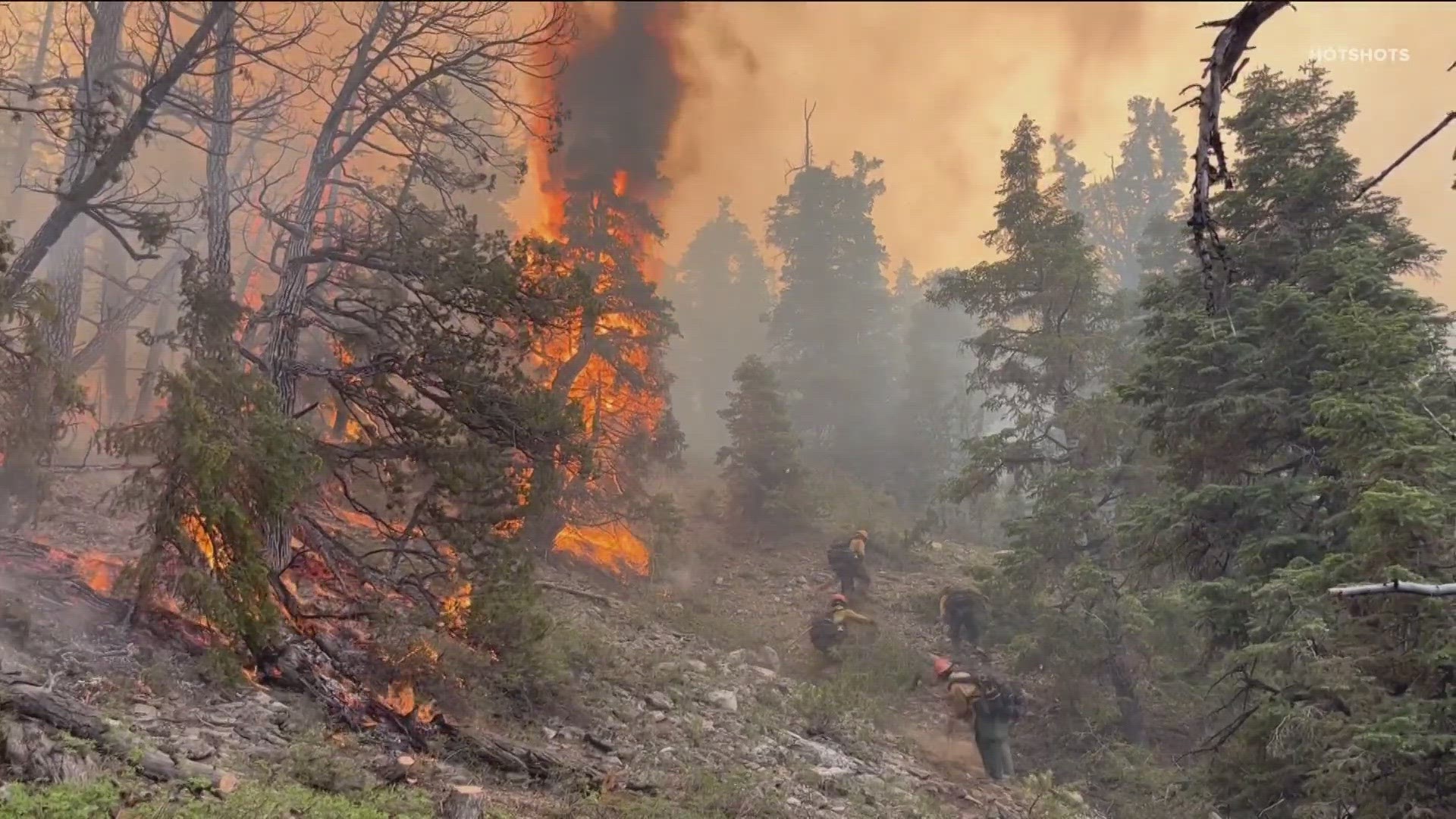IDAHO, USA — As winter burns out - and Idaho starts to warm up - the state will soon be feeling the heat of wildfire season.
Which is why incident meteorologists across the country are gathering in Boise this week to prepare for wildfire season.
Incident meteorologists are specially trained with the National Weather Service to deploy on-site to wildfires across the country. They're able to provide forecasts and communicate with incident command teams to help keep firefighters and first responders safe.
"Forecast accuracy can be the difference between life and death," Chris Waters, division chief of CAL FIRE said. "If you look at the history of wildland fire, much of what we do has been fostered by tragedy fires. Many of the tragedy fires that have occurred in the West have actually been a result of unexpected weather changes. Unexpected weather changes are what kill people. Really the key element for the incident meteorologist is to help inform the folks on the line of whatever's going on with respect to weather, to help keep them from getting themselves caught up in a burnover, or in some kind of an unfortunate tragedy."
During the week-long intensive training program, incident meteorologists are working with other agencies to perform exercises, including setting up Remote Automatic Weather Stations (RAWS), which can be put at wildfires to give continuous information.
"They'll give us critical information on temperature, humidity, winds, they also have rain gauges and solar radiation sensors," Bruno Rodriguez, an incident meteorologist said. "So, all these variables are really critical for us to make sure that we're monitoring the conditions on the ground and creating good forecasts."
Meteorologists say that weather conditions can change in an instant during wildfires, so it's crucial for crews in the field to be up to date on information.
"Being there on site allows us to jump on the radio and alert them, if need be," Rodriguez said. "Second, would be to help inform the incident management teams to help them make better decisions when it comes to strategies and tactics for suppression."
In addition to safety, the training also focuses on communication. Incident meteorologists are doing drills on developing spot weather forecasts and delivering weather briefings to provide information that helps incident command teams battling wildfires.
Several agencies are in the City of Trees for the incident meteorologist workshop, including the National Oceanic and Atmospheric Administration's (NOAA) incident meteorologists, RAWS technicians from the National Interagency Fire Center (NIFC), CAL FIRE officials, and fire behavioral analysts from Southwest Area Incident Management Team 1.
"One of our main priorities is to support our cooperators," Waters said. "In this business, nobody does anything alone. Cooperation between our state and federal partners is critical to success."
While the training is focused on wildfire response, the drills and exercises are also used for other emergency incident responses - including floods and mudslides.
The incident meteorologists are in Boise from forecast offices all over the county. There are 80 certified incident meteorologists, and 30 in training - the largest the program has ever been.
Watch more Local News:
See the latest news from around the Treasure Valley and the Gem State in our YouTube playlist:

